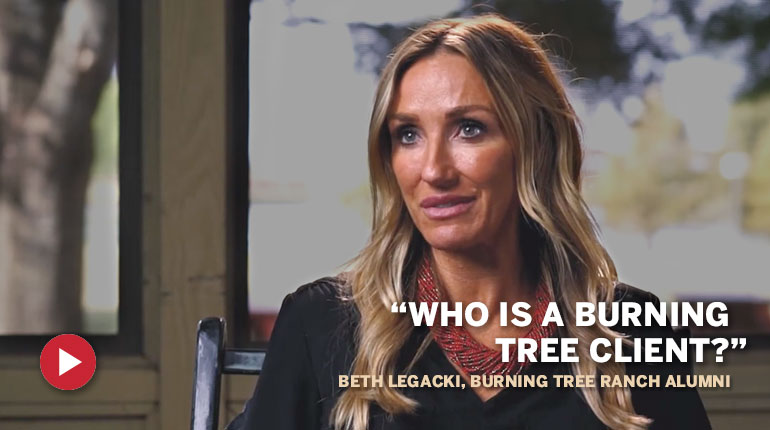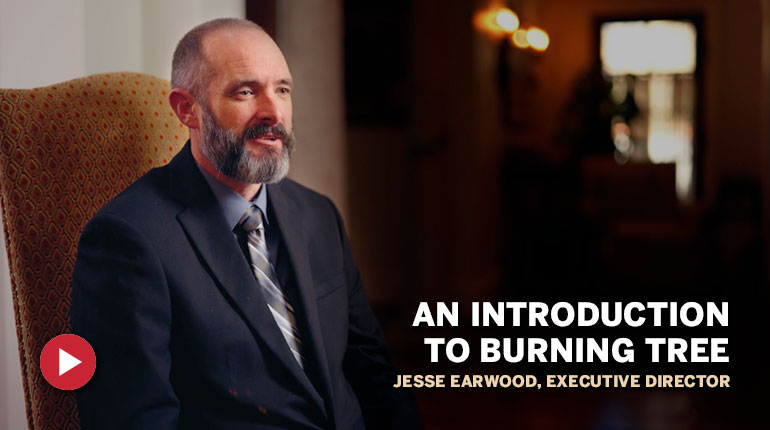As the Chief Operating Officer of an addiction treatment center, I have seen first-hand how disruptive the behavioral features of Borderline Personality Disorder (BPD) are.
When viewing this personality disorder through the lens of chronic addiction, its implications become even more profound.
I chose this topic because I found that many people simply do not understand what BPD is, how it affects the individual, and why. Furthermore, I want to take this time to address some common misunderstandings about the disorder.

Correcting Misconceptions: The First Step To Understanding BPD
First, I want to cover a few things I have recognized over the years. Most importantly, I want to help dispel some misconceptions about BPD.
To do so, we will discuss what BPD is not.
- Borderline Personality Disorder (BPD) is not a life sentence nor is it indicative of someone being manipulative or attention-seeking by nature. I have witnessed many uninformed people believe the opposite, even family members. BPD is a severe disorder that may have grave impacts on the individual’s interpersonal relationships. I will cover this a little bit more later on. My main point is this: BPD can be treated.
- Borderline Personality Disorder (BPD) is not caused by personal failings or a lack of willpower. It simply isn’t. I have enjoyed many engagements with people who suffer from this disorder. Not one of them has ever expressed a desire to live with BPD’s symptoms or features. Curious what the features of BPD are? I will discuss some of them below.
Before I do, I want to address a few other misconceptions about BPD. Again, the focus of this section is for us to determine what BPD is not.
- Not a Rare Condition: BPD is not uncommon. It affects many people, though it can often be misunderstood or misdiagnosed.
- Not the Same as Being ‘Difficult’: BPD symptoms can be challenging, but they do not mean the person is just being difficult or troublesome. They reflect more profound emotional struggles.
- Not Incurable: BPD is not an incurable disease. Many people with BPD can lead fulfilling lives with the proper treatment and support.
I meet many parents, spouses, siblings, and family members in my current role. While many of them can describe the features of BPD in their loved ones, most do not understand the disorder itself. Hopefully, we can clear some of that up below. Let’s try!
Deciphering Borderline Personality Disorder (BPD)
In keeping with the theme above, I want to avoid explaining BPD in an overly clinical way. After all, that is the job of an appropriately licensed mental health clinician. My focus here is to speak simply and clearly, from my experience.

Put simply, BPD is a complex condition that features emotional instability, impulsive behaviors, and often, challenging relationships. If you love someone with Borderline Personality Disorder, you may be able to relate to this description.
To expand a little bit, I will share a few additional observations. These come from my many encounters with BPD symptoms. Before I share them, I just want to remind you of what I shared at the beginning: BPD is not a choice. It is a disorder.
Here are a few features I have witnessed firsthand. Perhaps you have, too.
- Rapid mood swings
- Intense feelings of anger, anxiety, and depression
- A propensity for risky or self-destructive actions
- Fear of abandonment
- Unstable relationships
- A distorted self-image
As you would guess, these symptoms not only complicate the individual’s life but also significantly influence their addiction patterns. I’ve seen them present as considerable impediments to meaningful long-term recovery.
Challenges of BPD in Chronic Relapse
As I’ve already indicated, the intertwining of BPD with chronic addiction introduces a very complex dynamic to the treatment process. As a loved one, you may have noted how the erratic nature of BPD often mirrors the cyclical pattern of addiction and relapse. Not surprisingly, this complexity demands a very tailored approach to treatment. While I am sure that other treatment centers do a great job supporting their clients with a dual condition of BPD and addiction, I know for a fact that we do. It’s what we specialize in.
But none of that means we can’t do better!
Below is a quick rundown of the offerings I wish to see expanded in treatment facilities that seek to treat those battling BPD.
Firstly, a more profound knowledge of the critical challenges that impact the therapeutic relationship. I’ve seen time and time again why it is so important to understand the BPD client from these possible perspectives.
- Fear of Abandonment: BPD clients often resist forming close bonds with therapists due to a deep-seated fear of being abandoned, which complicates building a stable therapeutic relationship.
- Idealization and Devaluation: There’s a tendency among BPD clients to alternately idealize and devalue their therapists, which can severely disrupt the foundation of trust and consistency necessary for effective therapy.
- Emotional Intensity: The high emotional sensitivity common in BPD clients can frequently lead to misunderstandings or conflicts within the therapeutic context, making communication challenging.
- Boundary Issues: BPD clients often have difficulty understanding and respecting personal boundaries, which can significantly strain and challenge the therapist-client relationship.
- Trust Issues: Deep-seated trust issues in BPD clients may severely hinder the development of a solid therapeutic alliance, crucial for successful treatment outcomes.

Secondly, let’s all do a better job at educating our non-clinical staff on the features of Borderline Personality Disorder. In my opinion, this is a mission-critical endeavor. Here’s why:
- Enhanced Understanding: It fosters a deeper understanding of the behaviors and needs of clients with BPD, leading to a more empathetic and supportive environment.
- Consistent Support: Knowledgeable staff can provide consistent support and responses across all interactions, reinforcing the therapeutic strategies and contributing to a stable healing environment.
- Early Identification of Issues: Trained staff are better equipped to recognize signs of distress or crisis in clients, allowing for timely intervention and support.
- Improved Communication: Understanding BPD helps staff communicate more effectively with clients and allows for the fostering of positive interactions.
- Safety and Well-being: Education on BPD symptoms and features can help ensure clients and staff’s safety and well-being by promoting understanding and reducing misunderstandings or conflicts.
- Whole-Center Approach: It supports a holistic, center-wide approach to treatment, where every interaction clients have contributes to their recovery journey, not just those with clinical staff.
- Reduces Stigma: Educating all staff helps reduce stigma and misconceptions about BPD, promoting a more inclusive and healing atmosphere within the treatment center.
Suppose we do these things and move towards a more profound understanding. In that case, I believe all of us can offer better and better treatment for our clients suffering from Borderline Personality Disorder. And that’s what I’d like to do!
Final Thoughts and Recommended Reading on BPD
Before I go, I want to compile a list of books on Borderline Personality Disorder. I have not read all of them, but I know people who have. Hopefully the following books – and the few insights I have shared above – will be helpful.
Brook
Books on Borderline Personality Disorder
- “I Hate You—Don’t Leave Me: Understanding the Borderline Personality” by Jerold J. Kreisman and Hal Straus
- Description: This book offers a comprehensive overview of Borderline Personality Disorder (BPD), providing insights into the symptoms, causes, and treatment options for BPD. It’s a valuable resource for both individuals struggling with BPD and their loved ones.
- https://www.amazon.com/Hate-You-Dont-Leave-Understanding-Personality/dp/0399536213
- “Stop Walking on Eggshells: Taking Your Life Back When Someone You Care About Has Borderline Personality Disorder” by Paul T. Mason and Randi Kreger
- Description: This book is aimed at friends and family members of people with BPD. It provides practical advice on managing relationships, setting boundaries, and communicating effectively with someone with BPD.
- https://www.amazon.com/Stop-Walking-Eggshells-Borderline-Personality/dp/1572246901
- “Borderline Personality Disorder Demystified: An Essential Guide for Understanding and Living with BPD” by Robert O. Friedel
- Description: Dr. Friedel offers a clear and comprehensive guide to BPD, its symptoms, treatment options, and strategies for living with the disorder. This book is helpful for both individuals with BPD and their loved ones.
- https://www.amazon.com/Borderline-Personality-Disorder-Demystified-Understanding/dp/1569244561
- “The Borderline Personality Disorder Survival Guide: Everything You Need to Know About Living with BPD” by Alexander L. Chapman and Kim L. Gratz
- Description: This book provides practical tips and strategies for managing BPD, including how to cope with symptoms, develop healthier relationships, and improve emotional stability.
- https://www.amazon.com/Borderline-Personality-Disorder-Survival-Guide/dp/1572245077
- “Mindfulness for Borderline Personality Disorder: Relieve Your Suffering Using the Core Skill of Dialectical Behavior Therapy” by Blaise Aguirre and Gillian Galen
- Description: This book introduces mindfulness as a tool for people with BPD, offering practical exercises and techniques based on Dialectical Behavior Therapy to help manage emotions and improve overall well-being.
- https://www.amazon.com/Mindfulness-Borderline-Personality-Disorder-Dialectical/dp/1608825655




